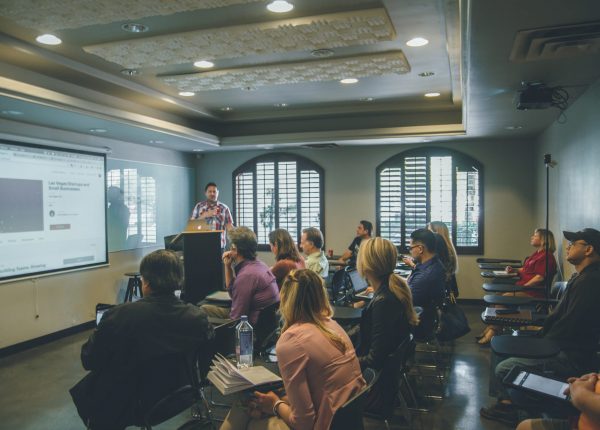

Jasmin Palamar, peer educator for Under Pressure, starts the conversation about disinformation and polarisation with other young people by tapping into his own experiences. These conversations can be tough at times, but he deliberately wears his own vulnerability on his sleeve.
Young people often feel poorly represented by mainstream media, if they even feel represented at all. At the same time, they are exposed to the online maelstrom of polarising content day in, day out, with disinformation and conspiracy theories spreading at lightning speed. Under Pressure strives to foster conversations about disinformation and polarisation in the classroom by having young role models, our peer educators, share their personal experiences.
Lending a helping hand
Peer educator Jasmin Palamar was struck by how rare good conversations seem to have become. “Even though social media give us access to many more different views and opinions than ever before, we seem to have become more firm in our own convictions and less able to understand each other. Nowadays, people can even disagree on facts, let alone empathize with each other’s world views. Putting yourself in other people’s shoes, however, is incredibly important, because it helps you stay critical of your own views.”
Although he is a full-time student, Jasmin was looking for a way to add value to society, which is why he decided to sign up for Under Pressure. “It’s really satisfying work, even though I’m only making a modest contribution. Having young people thank you at the end of class and tell you how they had a good time and learned something new is invaluable.”
Jaded by online polarisation
Jasmin is concerned by the effects of online polarisation. “I have seen it happen to people around me: young people are more jaded than ever before because of online negativity. This sees them shut themselves off from public debate or makes it impossible to have an honest discussion about socially relevant topics without frustrations boiling over. That’s a shame, because it essentially blocks all progress.
Jasmin now taps into his own experience to talk to young people about disinformation, conspiracy theories and democratic values, such as by talking about a Facebook post of his in which he commented on the refugee debate, in order to fuel a conversation about freedom of expression. He asks the students what they think about his post and the way in which he expressed his opinion. “I often get a very mixed response. Young people often tell me that they’re reluctant to get involved in discussions on social media. They’re wary if they disagree with something, worried about how others will interpret their posts or they simply don’t know where to start.”
“Sharing my own experiences is the best way to show them that I, too, believed in conspiracies once, but managed to see reason later on.”
Vulnerability
Recently, Jasmin talked to a student who was upset about the fact that he had labelled conspiracy theories as being potentially dangerous. “The student mentioned the ‘shadow government’ and a celebrity who had admitted to drinking the blood of children in a video.” It was a difficult discussion to have, but it’s still important to avoid coming across as a know-it-all, especially if you’re a peer educator, Jasmin stresses. “People tend to have a very aggressive, knee-jerk response to conspiracy theorists and are quick to label them ridiculous. I visit classrooms to foster conversation, so I have to show my own vulnerability too. I’m not there to spread my own philosophy, I’m there to hold up a mirror to young people.
That’s why Jasmin also talks about conspiracy theories that he once believed in himself. At 14, he was “susceptible to illuminati conspiracies.” “I was a big fan of Tupac and read everything I could about the conspiracy theories surrounding his death. His murder was never solved, which only added to the mystery. By sharing my own experience, I can show students what it’s like to believe in something one day and to see reason later on.”
Critical attitude
According to Jasmin, many young people are not aware that they too may fall victim to disinformation or conspiracy theories. During his classroom visits, he hopes to plant a seed and to encourage them to adopt a critical attitude towards others and, importantly, towards themselves. “I don’t think that I managed to persuade the student who believed in blooddrinking celebrities to abandon his beliefs right away, but by engaging with him, I got to ask him about his sources. I was happy just to talk to him about it and was glad that, apparently, he felt safe enough to bring it up.”
Jasmin also shares practical tips on how to recognise disinformation. “And even though students might not use the tips every time they browse social media, just knowing how to fact-check posts can be a valuable skill. The best possible result we can hope for is that students realise that they too can fall into the trap of believing fake news. You can achieve so much just by talking about it.”
Author: Nina Ramkisoen
